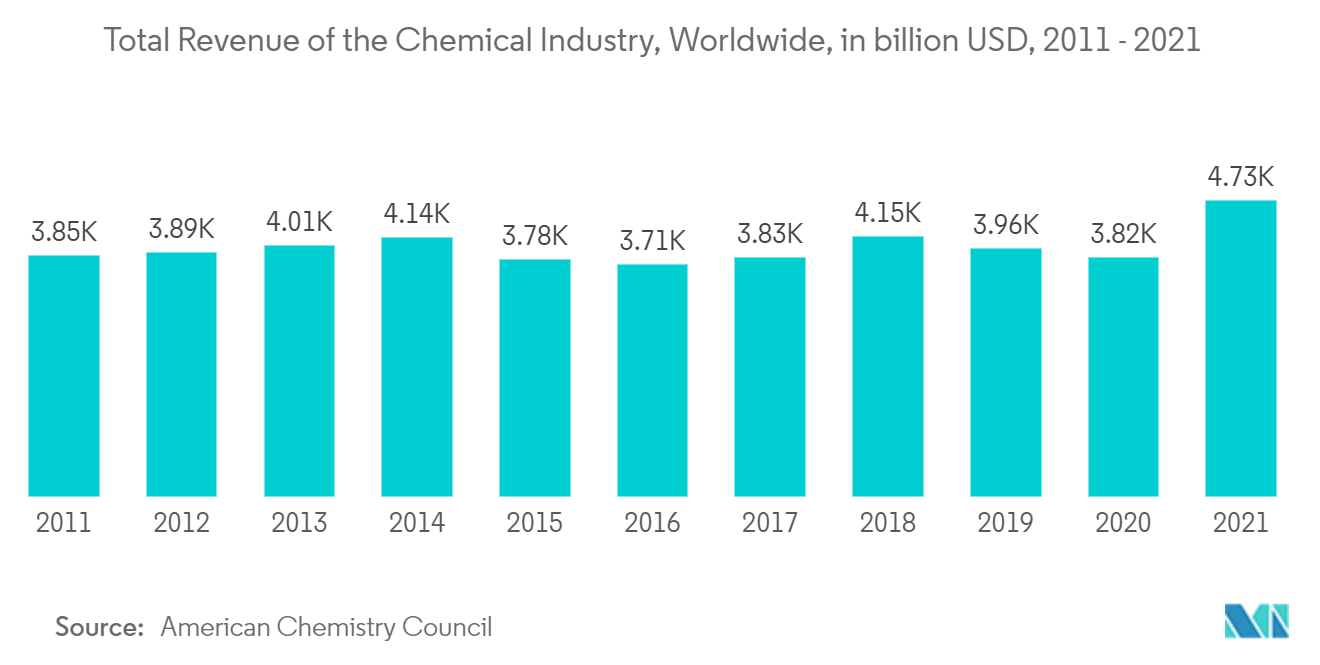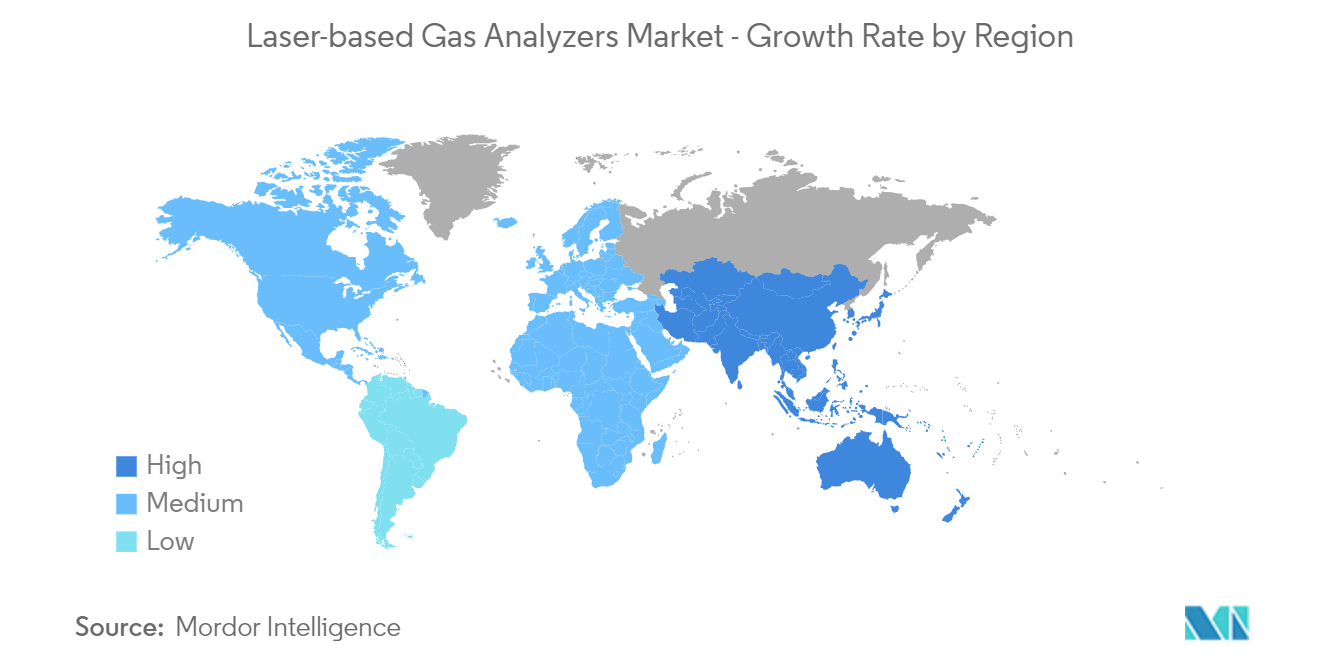Market Trends of Laser-based Gas Analyzers Industry
This section covers the major market trends shaping the Laser Based Gas Analyzers Market according to our research experts:
Chemical Industry to Witness Growth
- In the chemicals industry, oxygen is one of the many undesired contaminants that can impact the reaction or degrade the final product of the company. For example, olefin co-catalyst systems provide high quality and yield of the final polyolefin product if the olefin feedstock stream is free from oxygen. In such cases, oxygen gas analyzers play a vital role, with low ppm capabilities, to ensure that the products can be maintained at an optimum level.
- Blanketing is one of the most common activities performed when highly flammable products are stored or transported to reduce the risk of explosion. In blanketing, laser gas analyzers are used to monitor the presence of undesired gases below the explosion risk.
- For instance, while storing hydrocarbon liquids in tanks, it is possible that air will leak into the headspace above the liquid level, which may form explosive gas mixtures. Carbon dioxide or nitrogen is injected above the liquid into the headspace to remove its presence.
- Process gas analyzers play a crucial role in ensuring the safe running and efficiency of numerous chemical production steps. Process gas analyzers are critical components, from preventing the development of explosive conditions in reactors to controlling combustion in thermal oxidizers.
- Hydrogen is one of the essential products and intermediates of the chemical industry. For instance, hydrogen is commonly used as feedstock in the industry to produce ammonia. Thus, a significant demand exists for hydrogen analyzers in the industry, which are used to determine the concentration of hydrogen in a gas mixture.
- The strong growth in the chemicals industry in recent times is expected to fuel the demand for gas analyzers significantly. For instance, BASF shows that growth in the global chemical industry was 6.1% in 2021. According to the organization, global chemical production was expected to grow by 3.5% in 2022, which is above the average for the years before the coronavirus pandemic.

Asia-Pacific to Dominate the Market
- Asia-Pacific is the only region to register an oil and gas capacity growth in recent years. About four new refineries were added in the region, which has added about 750,000 barrels per day to global crude oil production. Increased investments in new plants in oil and gas, steel, power, chemical, and petrochemicals and the rising adoption of international safety standards and practices are expected to influence market growth.
- The development of industries in the region is driving the growth of gas analyzers, owing to their use in the oil and gas industry, such as monitoring processes, increased safety, enhanced efficiency, and quality. Hence, the refineries in the region are deploying gas analyzers in the plants.
- The APAC region has the largest older population demographic. As per the Population Reference Bureau, China has about 166 million citizens aged over 65, which is twice the elderly population of Japan, Germany, and Italy combined.
- Furthermore, gas analyzers are also being used to analyze the pollution levels across a city. In countries like China and India, pollution levels are at an all-time high, leading to gas analyzers being deployed to monitor and control pollution levels.
- Researchers are making efforts to reduce greenhouse gas across the world, and for the analysis purposes of these gases, they are using the gas analyzer. For example, scientists from Southeast Asia are investing in measuring Greenhouse Gas (GHG) emissions from goats and cattle by investigating the effects of different feeding regimes and implementing a portable FTIR gas analyzer from Gasmet Technologies. These factors are expected to drive the market for gas analyzers in the region.


